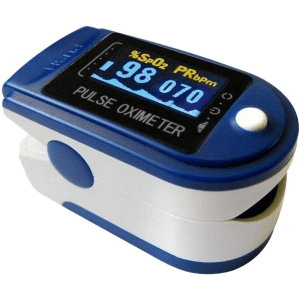Short of breath? Struggling for air? Not thinking clearly? You know something is wrong but, dang, if you can’t figure it out. What can you do about it?
Or, on the other hand, you think you’re breathing fine, inhaling all the oxygen you need, but are you sure? The colossal irony about an oxygen deficit is that you’ll be the last to know. Mental awareness about your oxygen level can be tricky. Low oxygen levels impair thinking when the brain is deprived of oxygen. Silent hypoxia refers to the inability to recognize a low oxygen level.
What Does an Oximeter Do?
Healthy people don’t need to worry about oxygen levels in their blood. Still, those with asthma, COPD, or other lung defects have to be concerned with the oxygen saturation or concentration in their blood. Higher glucose levels impede oxygen delivery to some extent by damaging the hemoglobin molecule that carries oxygen (measured by a high A1c level). This adds to any prior damage to organs and blood vessels from elevated glucose levels. With today’s Covid-19 threat, everyone is better off knowing their oxygen level. If low, it may signify that a COVID infection is underway.

People with diabetes have unique risks if they contract COVID, and a greater need to monitor their oxygen level. Oxygen deprivation can come on quickly, so the need to know can be immediate.
A fingertip pulse oximeter is the most reliable way to measure the oxygen level in your blood. It’s a simple device, like a clothespin, that clips on your index or middle finger. Besides measuring your blood oxygen, it also reads your pulse. These were previously used to assess health status in doctor’s offices, emergency rooms, and hospitals. Now, with prices so low, the oximeter is used at home for accurate, convenient, and quick determinations of oxygen levels and identification of Covid-19.
Even if you never get COVID, having a pulse oximeter available to establish your baseline oxygen level is essential. An oximeter provides peace of mind for anyone with asthma, COPD, or other lung problem. The pulse oximeter helps detect hypoxia caused by sleep apnea and Cheyne-Stokes respiration (CSR) in heart failure. Both heart failure and apnea are associated with Type 2 diabetes.
Normal blood oxygen levels fall between 95 to 100% for a safe range. Call your doctor if your level is lower than 94% with any symptoms, and definitely, if you are 92% or lower on repeated measurements. A simple oximeter helps reduce anxiety levels in anxious times.
